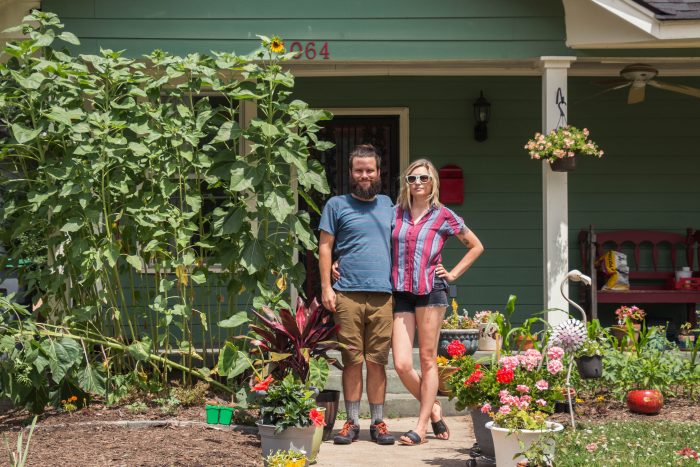For the past 15 years, I’ve been in the most peaceful, reliable, and fun relationship of my life.
But our once-close connection has eroded.
It’s my second marriage. We’ve brought two children into the world. We’ve traveled the world.
And in some ways, we’ve grown worlds apart. The constant change and upheaval of raising a family has formed gulfs between us.
Our married and divorced friends have commiserated with us about the challenges of keeping a close, intimate connection over multiple years with the same partner, especially when there are children involved. Yet, with effort, we know we can grow individually and still not grow apart.
Gaps in marital closeness are necessary and beneficial. These gaps allow for growth as we change, individually and as a couple. When I feel discouraged by the emotional and physical distance between my husband and me, I remember one of my favorite literary quotes:
“Let there be spaces in your togetherness, and let the winds of the heavens dance between you. Love one another but make not a bond of love: Let it rather be a moving sea between the shores of your souls.” ~ Kahlil Gibran
Striking a balance between giving space and maintaining intimacy is the most difficult aspect of marriage for me. This causes me malaise. It makes me squirm. I haven’t known how to deal with it.
When discomfort alerts us to a problem, holding onto the old ways of doing things is an ineffective solution. We need a new approach.
Based on my experience teaching yoga and other mindful practices, I’ve learned that movement, touch, and focusing our mental energies are effective ways to channel feelings into positive action.
In an effort to apply the tools of yoga and mindfulness to my own marriage, I created this list of five accessible methods for reconnecting with a spouse. May it be of benefit to all couples in a similar place on their shared journey.
1. Eye-gazing.
Drishti is the Sanskrit term for “focused gazing.”
Directing the eyes to particular points of concentration refines the practice of yoga and meditation. Tratak is another Sanskrit term describing the practice of fixing one’s gaze for extended periods of time on a focal point such as a candle flame.
Mindful eye-gazing is an excellent tool to deepen our intimate connection within marriage. Sitting face-to-face with a spouse while maintaining mindful eye contact cues both partners into each other’s vulnerability and inner experience.
My first attraction to my husband was established through eye contact. Anytime our eyes meet for more than a second, I have a visceral sense of my connection to him. Big shocker here: in our quotidian family routines, we rarely have uninterrupted conversations while gazing into each other’s eyes. So, I am trying to be more aware of keeping my eyes focused on him when we talk, even during family meals. As a result, I’m feeling closer to him.
He’s not one for rituals or couples yoga, so we haven’t formally set aside time for eye-gazing, but I know it’s a popular and effective exercise in couples’ workshops. I have heard it said by yogis that looking into anyone’s eyes for long enough will make you fall in love, and there is even some scientific backing for such a claim.
2. Touching with intention.
All spouses touch each other regularly, but how often do we put focused intention behind our touch?
A quick kiss goodbye before heading out the door or a hug on Sunday morning while making breakfast are both examples of ordinary spousal touching.
A more intentional touch would be while discussing a difficult subject, say an upcoming holiday gathering with family members we find triggering, we mindfully place a hand on our partner’s arm or chest to give support. This could be a silent moment or it could be tied to what we say, perhaps something like, “I know how much Uncle Jack’s drinking upsets you, and I’m sorry.” An additional mindful touch enhances the impact of the kind words.
Another example: before one of us travels for work or a personal retreat, I place my right hand over his heart and he reciprocates, touching my heart before our goodbye kiss. It’s a gesture we can remember to feel connected while apart. I love it when my spouse and I are in a group setting and he places his hands on my shoulders. I don’t always feel comfortable in groups and he knows this, so his intentional hand placement makes me feel supported.
Think of the types of touch you find most comforting and set an intention to touch your spouse in these ways more often.
3. Mindful listening.
Many of our conversations as married people raising children involve our kids’ schedules, needs, and other practical domestic concerns. Our own work schedules and necessary health maintenance also impact how much time we have for each other.
When we do have one-on-one time, I often waste the moment by letting my attention drift, or blabbering on about whichever inanities are floating around my consciousness. When I noticed how the quality of my attention was impacting my marriage, I worked on developing mindful listening skills. This is still a work in progress.
When we mindfully listen to our spouse, we hold space, pause often, and keep our attention focused.
This is the practice I have started using: i) pause before asking a question, ii) keep my visual focus fixed on my spouse as he speaks, iii) don’t interject or interrupt, iv) notice nuances in his voice and manner, and v) pause to reflect after he finishes speaking before I reply.
4. Making use of memory.
Recalling the past partly shifts our attention away from our present experience. But that doesn’t make the practice any less mindful and useful for reestablishing intimate connection.
Our memories can infuse our relationships with the flavors of cherished shared experiences.
In recent times, when I’ve felt disconnected from my spouse, I intentionally recalled my favorite memories of him from our dating years. I will always remember that my husband did a cartwheel after our first kiss, how we used to skip hand in hand down Brooklyn streets in our 30s, and the look on his face when he pulled me into a swimming pool—fully clothed—right after we met.
When I feel overwhelmed by his boisterous (read: loud) enthusiasm in our household, I recall those specific instances; I remind myself that his personality quirks are largely what drew me to him in the first place. We have also been going through old photos together as we archive them, and this act of looking back at our joint past, reflecting on it together, is reaffirming our bond.
5. Breath connection.
Breath is life, and we can use it to bring more life back into our relationships.
Just as we’re mindful of our breath in yoga, meditation, and all types of athletic pursuits, we can bring breath awareness into our intimate relationships to deepen our connection and heighten our pleasure.
There are many ways to incorporate mindful breathing into intimate moments with your spouse. Being aware of each other’s breathing will undoubtedly enhance your closeness. Matching your partner’s breathing in meditation is a powerful way to merge. Try sitting back-to-back as you meditate and match the timing of your inhalations and exhalations for a few minutes, or exhale as your partner inhales, and vice versa.
When you kiss your spouse during foreplay or after sex, match your breathing to theirs and breathe in their exhalations as your lips touch. Playfully incorporate the element of surprise, with quick little exhalations and inhalations as you kiss, taking each other in and bouncing the breath back and forth.
Each marriage is unique. What works in mine won’t necessarily be a perfect fit for yours, but each of the elements above are adaptable to individual personalities and communication styles. The key is to keep an open mind and heart, staying true to your intention of reconnecting.
Having a mindful marriage is a noble pursuit of which every spouse is worthy and capable.
~


 Share on bsky
Share on bsky





Read 11 comments and reply